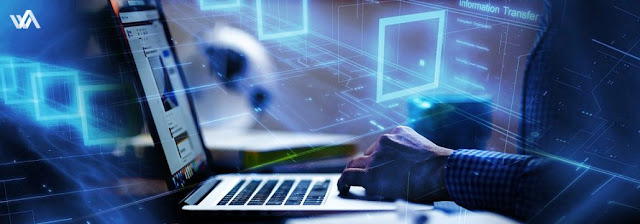
Remote Infrastructure Management
With advancements in remote connectivity technologies and data analytics,
remote infrastructure management has become a highly adopted model for
maintaining IT systems and infrastructure. By leveraging technologies like
cloud computing, AI, automation and predictive analytics, companies are able to
gain visibility and control over their distributed IT environments from
anywhere in the world. This trend is disrupting the traditional on-premise
approach to IT management and is increasingly becoming the preferred choice for
many organizations.
What is Remote Infrastructure Management?
Remote infrastructure management refers to the practice of monitoring,
maintaining and supporting an organization’s IT infrastructure and systems from
a remote location using software and connectivity technologies. Some key
aspects of remote infrastructure management include:
- 24/7 monitoring of servers, networks, storage devices and other IT assets
deployed across multiple locations from a centralized management hub. This
helps identify issues before they impact operations.
- Remote installation and configuration of new systems without the need for
on-site support. Software-defined infrastructure approaches allow virtual and
cloud resources to be provisioned from anywhere.
- Remote troubleshooting and remediation of issues using tools like remote
desktop access, chatbots and augmented reality without disrupting end users.
Issues can be resolved quickly without on-site visits.
- Automation of routine maintenance tasks using configuration management
databases and automation scripts. This reduces manual effort and frees up
resources for more strategic work.
- Analytics-driven predictive maintenance using tools like machine learning to
analyze telemetry data from IT assets and flag potential issues in advance.
This helps achieve proactive management.
Benefits of Remote
Infrastructure Management
Some of the key benefits that organizations report in adopting remote
infrastructure management approaches include:
Cost Savings
Remote management eliminates the need for maintaining an on-site support staff
across multiple locations. It also reduces travel costs for on-site visits
during issue resolution. Overall operational expenditures are lowered
significantly.
Increased Efficiency
With centralized monitoring and control, issues can be tracked and addressed
faster without location constraints. Time spent troubleshooting and fixing
problems is reduced dramatically. Resources are also utilized more efficiently.
Enhanced Visibility and Control
A unified view of the entire infrastructural landscape gives better visibility
into asset performance and usage patterns. Control over configurations, updates
and other managements functions can be exercised from any location.
Improved Responsiveness
Remote tools allow infrastructure teams to address any issue on priority
irrespective of location-specific constraints. ‘lights-out’ data centers can be
managed proactively without human presence constantly. This improves the
overall responsiveness of IT operations.
Enhanced User Experience
Since issues can be addressed seamlessly in the background without affecting
end users, remote management helps deliver consistent user experience at all
organizational locations. Productivity of end users is optimized.
Business Continuity
Infrastructure management can continue seamlessly during events like travel
bans, natural disasters or restricted working conditions like during the
current pandemic. This ensures business operations face minimal disruptions.
Challenges of Remote Infrastructure Management
While remote management brings many advantages, it also poses some challenges
that need to be addressed:
Security Concerns
As infrastructure is managed over often public networks, security of the
management platform and access to infrastructure components becomes critical.
Strong access controls, encryption, identity management et al. are important.
Connectivity Reliability
Managing infrastructure demands stable network connectivity between management
consoles and managed assets. Bandwidth fluctuations or ISP glitches can mar
management functionality. Redundant links help.
Troubleshooting Difficulty
Remote diagnosis becomes tricky without physical access to components.
Technologies like AR/VR aid, but on-site support may still be needed sometimes
during complex faults. Hybrid models work better.
Change Management
Pushing configuration changes remotely in large environments needs disciplined
change and release management practices to avoid conflicts or regressions.
Rollbacks are critical.
Remote Workforce Challenges
Managing remote teams itself poses issues around collaboration, knowledge
transfer, workforce analytics etc. Strong communication practices and tools are
needed alongside.
Compliance Complexities
Regulatory norms around data security, privacy etc need addressing diligently
to ensure infrastructure components being managed remotely adhere to mandates
when functioning across geographical boundaries.
The Future of Remote Infrastructure Management
With 5G rollouts, advanced edge and IoT technologies, the futuristic model of
remote infrastructure management is one dominated by autonomous operations
leveraging AI and self-healing networks. Some emerging areas include:
- AI-driven Infrastructure
AI will be embedded across components like storage arrays, servers and switches
to enable self-monitoring, self-optimizations and even self-remediation of
issues without human oversight.
- Edge Infrastructure Management
Gartner predicts over 50% of enterprise-generated data will be created and
processed at the edge by 2022. Edge infrastructure deployed across IoT/OT
environments will demand sophisticated remote management.
- Predictive Analytics at Scale
Advanced machine learning models analyzing millions of metrics routinely will
make infrastructure management highly predictive in nature, flagging issues and
disruptions even before they occur to ensure proactive response.
- Autonomic Infrastructures
Inspired by biological systems, autonomous infrastructure will feature built-in
intelligence to self-configure dynamically based on demand, heal from
disruptions, perform upgrades seamlessly - achieving true hands-free operations
without human mediation.
Get More Insights On This Topic: https://www.newsstatix.com/remote-infrastructure-management-a-new-way-to-manage/
